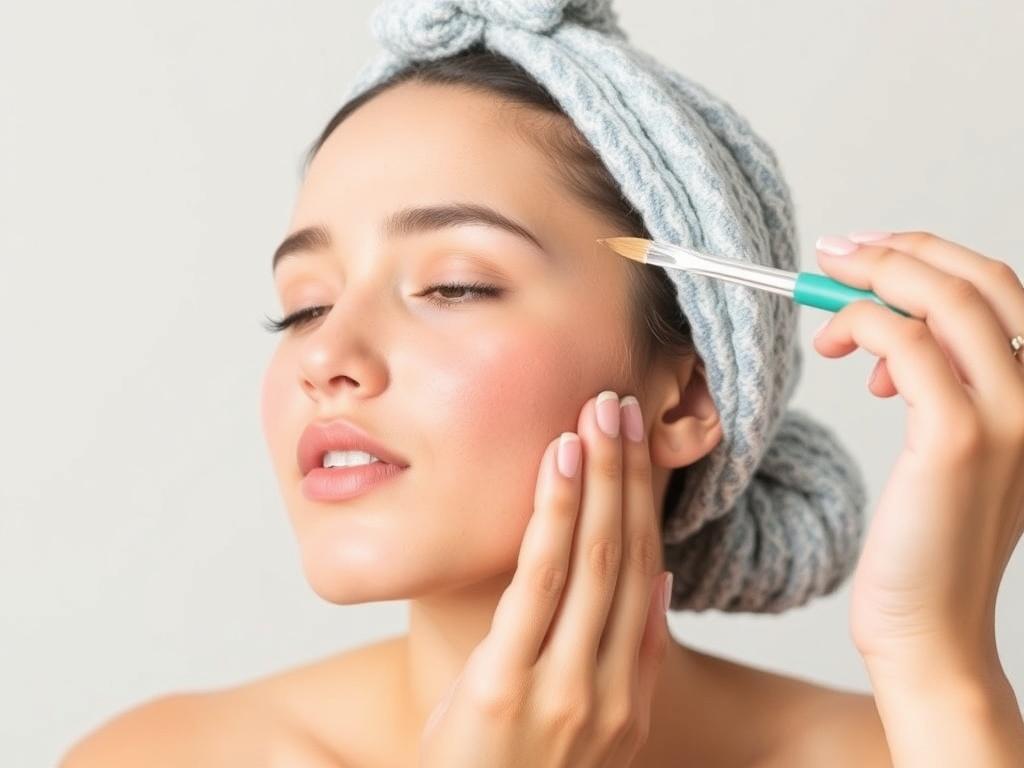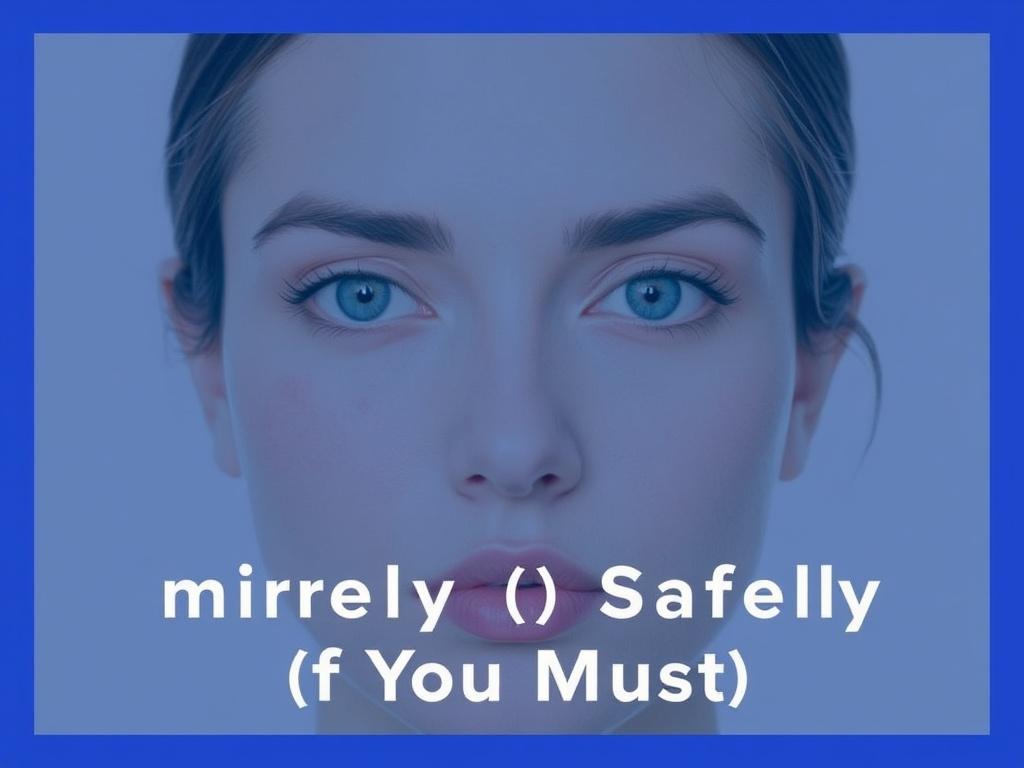Содержание статьи
- 1 Why You Should Think Twice Before Popping a Pimple
- 2 When Is It Safe to Pop a Pimple?
- 3 Step-by-Step Guide: How to Pop a Pimple Safely (If You Must)
- 3.1 Step 1: Wash Your Hands Thoroughly
- 3.2 Step 2: Clean Your Face Gently
- 3.3 Step 3: Sterilize a Needle or Pin (Optional)
- 3.4 Step 4: Soften the Pimple with Warm Compress
- 3.5 Step 5: Gently Apply Pressure
- 3.6 Step 6: Cleanse the Area Again
- 3.7 Step 7: Apply an Antiseptic
- 3.8 Step 8: Avoid Touching or Picking
- 4 Helpful Tips and Remedies to Promote Healing After Popping
- 5 Alternatives to Pimple Popping
- 6 Summary Table: Quick Dos and Don’ts of Pimple Popping
- 7 Additional Skin Care Tips to Prevent Future Pimples
- 8 Conclusion
Pimples are an unwelcome guest that can appear at the most inconvenient times. Whether it’s right before an important event or just part of a frustrating skin routine, the temptation to pop a pimple can be hard to resist. But everyone knows the risks involved—pain, irritation, redness, and most dreaded of all, scarring. So, is there really a way to pop a pimple safely? The answer is yes, but only if you follow the right steps carefully and with proper hygiene in mind. In this article, we’ll cover everything you need to know about how to pop a pimple safely (if you must), explore why it’s usually better to leave pimples alone, and share some tips to care for your skin afterward.
Why You Should Think Twice Before Popping a Pimple

First off, it’s important to understand why dermatologists almost always advise against popping pimples. When you squeeze or press a pimple forcefully, you risk pushing bacteria and pus deeper into your skin. This can lead to more inflammation, redness, and even infection. Worse yet, the trauma to your skin tissue increases the likelihood of permanent scarring or discoloration.
Acne pimples come in different types, and some are safer to handle than others. For instance, whiteheads and blackheads are usually better treated with cleansing and topical treatments, while cystic or nodular acne needs professional care. You should never pop deep, painful cysts or very inflamed bumps because this can worsen your skin condition significantly.
Different Types of Pimples and How They Should Be Treated
| Pimple Type | Description | Recommended Treatment | Safe to Pop? |
|---|---|---|---|
| Whitehead | Small, closed bumps with a white top caused by clogged pores | Gentle cleansing, exfoliation, topical benzoyl peroxide or salicylic acid | Only if it’s ready and soft; otherwise avoid popping |
| Blackhead | Open clogged pores with a dark surface due to oxidation | Use salicylic acid, retinoids, or gentle extraction by professionals | No, better treated with topical products |
| Pustule | Red pimples with a white or yellow center filled with pus | Can be popped cautiously if ready, otherwise use spot treatments | Sometimes, but proceed carefully |
| Cystic Acne | Large, painful, deep bumps under the skin | Medical treatments like antibiotics, corticosteroids, or retinoids | No, do not pop; seek professional help |
When Is It Safe to Pop a Pimple?
Now, if you still find yourself staring at that big, white whitehead staring back at you in the mirror, you might ask: “When is it actually safe to pop a pimple?” The golden rule is clear: only pop a pimple when the whitehead has fully developed, meaning it has a visible white or yellow tip and feels soft to the touch. If the pimple is red, swollen, or painful but *not* showing pus, it’s best to wait. Popping too early will irritate your skin, worsen inflammation, and increase the risk of scarring.
Another key is cleanliness. Your skin is full of bacteria, and your hands are too. Touching your face with dirty hands is a fast track to infection or a bigger breakout. So, even if you decide to pop a pimple, hygiene should be your top priority.
Checklist: When Should You Consider Popping a Pimple?
- Pimple has a visible white or yellow head
- The skin above the whitehead feels soft, not hard or too painful
- You can maintain perfect hygiene before and after popping
- You are prepared to treat the skin post-extraction
- You understand that popping does not guarantee faster healing
Step-by-Step Guide: How to Pop a Pimple Safely (If You Must)

Okay, ready to approach the dreaded pimple pop responsibly? Here’s a simple, step-by-step routine that minimizes the risk of infection and scarring.
Step 1: Wash Your Hands Thoroughly
This might seem obvious, but clean hands are your first line of defense against spreading bacteria. Use warm water and soap to wash your hands for at least 20 seconds. Avoid drying your hands with dirty towels—use a clean paper towel or let them air dry.
Step 2: Clean Your Face Gently
Use a mild cleanser suited to your skin type to wash your face. This removes oils, dirt, and surface bacteria that could enter the broken skin once you pop the pimple. Avoid harsh scrubbing, which can irritate your skin further.
Step 3: Sterilize a Needle or Pin (Optional)
If the whitehead is stubborn or under the skin, you might want to gently prick the surface to open it. Sterilize a small needle or pin by wiping it with rubbing alcohol or holding it carefully over a flame until red hot, then letting it cool. This reduces risk of introducing harmful germs.
Step 4: Soften the Pimple with Warm Compress
Applying a warm compress helps open pores and soften the pimple, making extraction easier. Soak a clean cloth in warm (not hot) water, wring it out, and hold it over the pimple for about 5-10 minutes. Repeat this a few times if needed.
Step 5: Gently Apply Pressure
Using two clean cotton swabs or your fingers wrapped in clean tissue, gently press down and sideways around the pimple. Do not squeeze straight down. If the pus doesn’t easily come out, stop immediately—forcing it can cause damage.
Step 6: Cleanse the Area Again
After extraction, cleanse the skin gently with a mild cleanser to remove any residual pus or blood. This reduces the chance of infection.
Step 7: Apply an Antiseptic
Using a cotton swab, dab a small amount of antiseptic like hydrogen peroxide, tea tree oil, or an over-the-counter acne spot treatment. This helps kill bacteria and promote healing.
Step 8: Avoid Touching or Picking
Once the pimple is popped, keep your hands away from the area. Picking or touching prolongs healing and increases risk of scarring.
Helpful Tips and Remedies to Promote Healing After Popping
Aftercare is just as important as the popping technique to avoid scarring and speed up recovery.
- Moisturize: Use an oil-free, non-comedogenic moisturizer to keep your skin hydrated without clogging pores.
- Use Sunscreen: Sun exposure on healing skin can cause pigmentation. Apply broad-spectrum sunscreen daily.
- Avoid Makeup Temporarily: Let your skin breathe and heal for at least a day after popping.
- Use Healing Creams: Consider products with ingredients like aloe vera, calendula, or niacinamide.
- Keep the Area Clean: Change pillowcases frequently and avoid dirty hats or scarves.
Common Myths About Pimple Popping You Should Ignore
When it comes to pimples, a lot of misinformation floats around. Let’s debunk some popular myths you might have heard:
- Myth: Popping a pimple makes it heal faster.
Truth: Popping can actually delay healing by causing inflammation and spreading bacteria. - Myth: You must pop all pimples to avoid scars.
Truth: Popping improperly increases risk of scarring; sometimes leaving them alone is best. - Myth: Popping pimples with dirty hands doesn’t cause anything bad.
Truth: Dirty hands can cause infection and worsen breakouts.
Alternatives to Pimple Popping
If you’re reluctant to pop pimples but want fast relief, several alternatives can help reduce inflammation and clear pimples safely.
Over-the-Counter Treatments
- Benzoyl Peroxide: Kills bacteria and dries out pus.
- Salicylic Acid: Helps unclog pores and reduce inflammation.
- Retinoids: Promote skin cell turnover and prevent clogged pores.
At-Home Remedies
- Warm Compresses: Help pimples come to a head naturally.
- Tea Tree Oil: Antibacterial properties when applied sparingly.
- Honey: Has natural anti-inflammatory effects.
Professional Treatments
- Extraction by Dermatologists: Safely remove pimples using sterile tools.
- Prescription Medications: For severe acne conditions.
- Laser or Light Therapy: Targets bacteria and reduces oil production.
Summary Table: Quick Dos and Don’ts of Pimple Popping
| Do | Don’t |
|---|---|
| Wash your hands before touching your face | Use dirty fingers or nails to squeeze pimples |
| Cleanse your face gently before and after popping | Pop pimples that are swollen, red, or without a head |
| Use warm compresses to soften pimples | Force pus out if it doesn’t come easily |
| Apply antiseptic post-extraction | Pick or scratch the area after popping |
| Moisturize and protect with sunscreen after healing | Ignore signs of infection like increased redness or pain |
Additional Skin Care Tips to Prevent Future Pimples
Preventing pimples is always preferable to dealing with the aftermath of popping. Here are some practical and easy skin care habits you can adopt:
- Maintain a consistent cleansing routine twice daily with gentle products.
- Use non-comedogenic and oil-free skincare products and makeup.
- Avoid touching your face frequently throughout the day.
- Change pillowcases and towels regularly to reduce bacterial buildup.
- Eat a balanced diet rich in fruits, vegetables, and water to nourish your skin.
- Manage stress through exercise, meditation, or adequate rest.
Conclusion
Popping a pimple safely is definitely possible, but it requires patience, cleanliness, and careful technique. Remember, the best way to avoid scarring and infection is to avoid popping altogether when possible and opt for gentle treatments and professional help if acne persists. When you absolutely must pop a pimple, make sure it’s ready, use clean hands and sterilized tools, apply gentle pressure, and care for the skin afterward with antiseptics and moisturizers. With these steps in mind, you can minimize damage and keep your skin looking its best. At the end of the day, a little self-restraint combined with knowledge goes a long way toward achieving clear, healthy skin without regrets.


